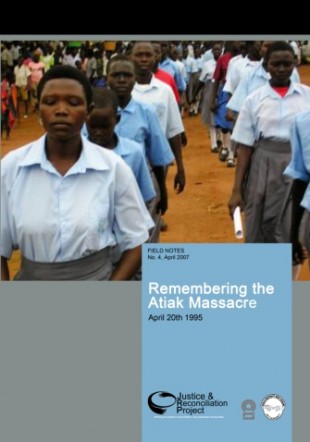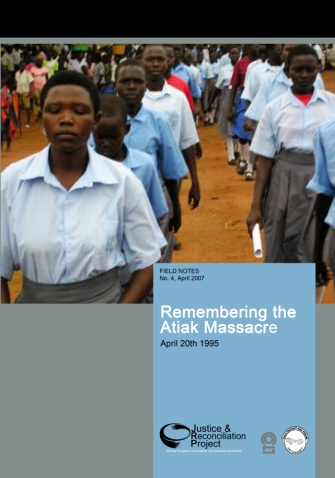
On April 20th 1995, the Lord’s Resistance Army (LRA) entered the trading centre of Atiak and after an intense offensive, defeated the Ugandan army stationed there. Hundreds of men, women, students and young children were then rounded up by the LRA and marched a short distance into the bush until they reached a river. There, they were separated into two groups according to their sex and age. After being lectured for their alleged collaboration with the Government, the LRA commander in charge ordered his soldiers to open fire three times on a group of about 300 civilian men and boys as women and young children witnessed the horror. The LRA commander reportedly in charge – the now indicted second in command Vincent Otti – then turned to the women and children and told them to applaud the LRA’s work. Before leaving, youth were selectively rounded up and forced to join the LRA to serve as the next generation of combatants and sexual slaves.
Twelve years later, the wounds of the massacre have far from healed. As the survivor’s testimony at the beginning of this report puts it, “all of us live as if our bodies do not have souls.” Despite the massacre being one of the largest and by reputation most notorious in the twenty-one year history of the conflict, no official record, investigation or acknowledgement of events exists. No excavation of the mass grave has been conducted and therefore the exact number of persons killed is not known. Survivors literally live with the remains of bullet fragments inside them. Although the massacre site is only a few kilometres from the trading centre, a proper burial of those slaughtered 12 years ago is not complete: as one survivor reminds us, “the bodies of some people were never brought back home, because there were no relatives to carry them home.”
This report seeks to provide the first known written record of events leading to the massacre based on the testimony of 41 survivors and witnesses, as well as prominent community members. It does not claim to be complete, but rather provides a partial record in hopes of prompting the Government to begin an investigation into the multiple massacres that have taken place in Uganda. Ideally, this will lead the Government to advance a transitional justice strategy, together with civil society, that will begin to heal the open wounds of Atiak. To this end, recommendations are advanced in the final sections of this report.
To access the report, click here
